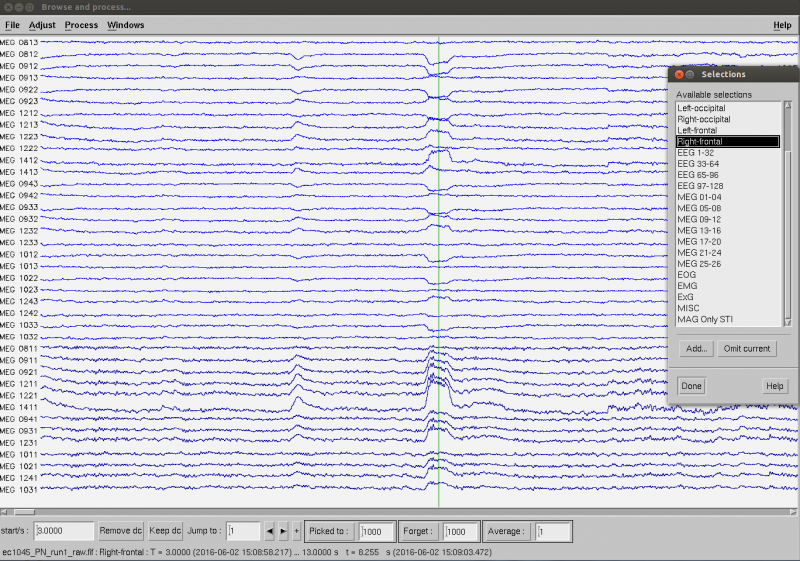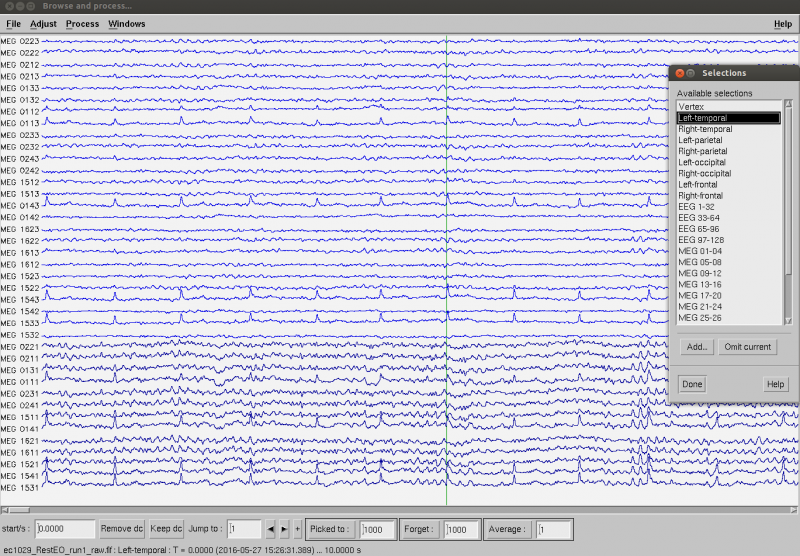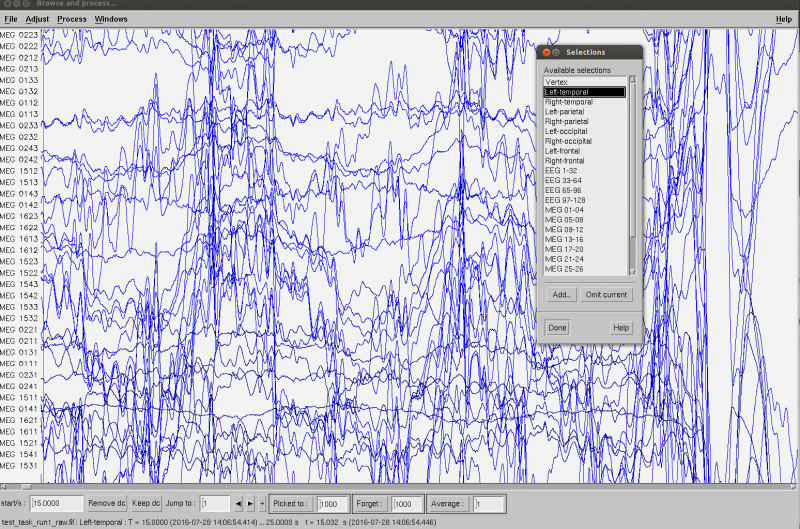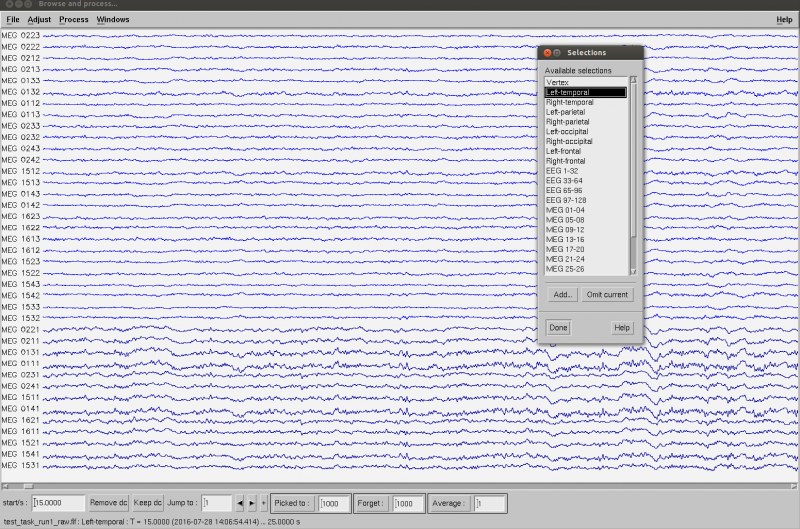Artifacts in MEG data
Artifact Handling
What is an artifact?
Artifacts are unwanted interference in your data that may or maynot mask your desired signal. It is good practice to remove these artifacts from your data before you begin analysis. There are a lot of MEG analysis software modules in the market that help you remove the artifacts. General procedure followed by most methods is first to identify them and then to remove them. Artifacts can be physiological or environmental in nature.
Some of the common artifacts are as follows:
Physiological Level
- Eye blinks (EOG) Electroocculogram
- Heart Beats (ECG) Electrocardiogram
- Head movements
- Muscle artifacts
- Dental artifacts
Environmental and System Level
- Power line noise:
- Squid Jumps
Common Examples of Artifacts
EOG
This is the most common artifact seen mostly in the "Frontal" MEG channels.

ECG
The heart beats are more visible in the temporal channels that are closer to the chest.

Dental Noise
Some participants may have metal fillings, braces that will cause huge artifact in the data. It is not in any way harmful to the participants, but degrades the data quality by a huge extent. We discourage the researchers who are recruiting participants from taking in subjects who have metal fillings, braces, permanent retainers etc., Although we understand this may be unavoidable in certain cases. We have a degausser in the lab that can be used in such cases where we 'demagnetise' the subject before we put them in the scanner.
Below is an example of one such dataset collected from a participant who had a permanent retainer. In the case of a permanent retainer, even the degausser did not help.
tSSS is an cleaning procedure that we run on the data after acquisition. The tSSS procedure takes care of dental noise and cleans the data.

